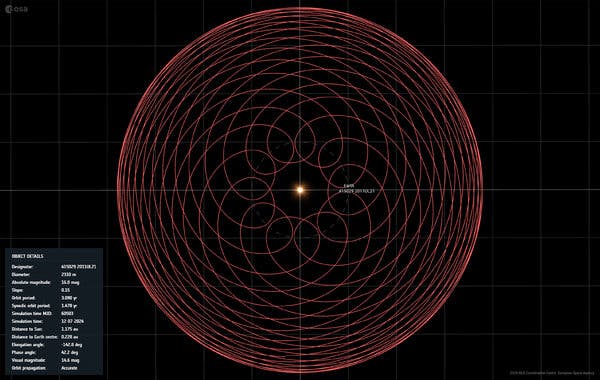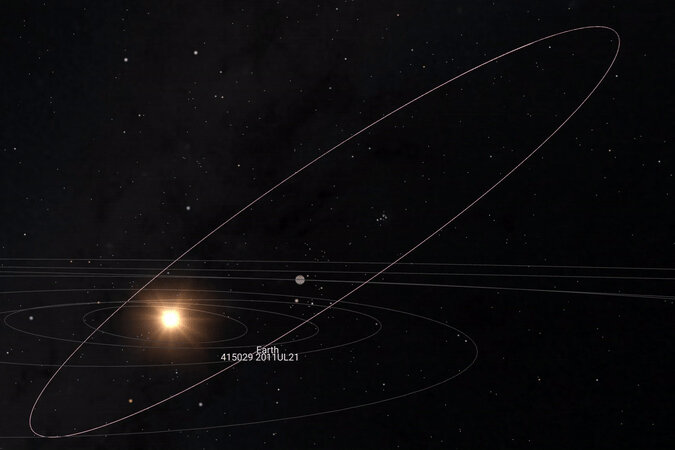The smaller of the pair was spotted only this month and could be visible with binoculars as it passes by our planet within the distance to the moon.
This week, two asteroids — one big enough to destroy a city, and the other so large it could end civilization — are set to fly near our planet.
Don’t panic.
Both have a zero percent chance of impacting Earth. And, depending on where you are in the world, you may even be able to see one of them.
The bigger of the pair, (415029) 2011 UL21, will travel at a distance more than 17 times farther away than the moon on Thursday at 4:14 p.m. Eastern time. It is a whopping 7,600 feet long, but it will be too far to spot easily without a strong telescope.
However, two days later, the smaller space rock, named 2024 MK will get considerably nearer to humanity. On Saturday, at 9:46 a.m. Eastern time, it will zip by Earth at 75 percent of the distance to the moon. If you have a decent backyard telescope or perhaps even with some good binoculars, and your skies are cloud-free, you could see the 400- to 850-foot rock as a speck of light zipping across the starry night.
“The object will be moving fast, so you have to have some skills to spot it,” said Juan Luis Cano, a member of the Planetary Defense Office at the European Space Agency.

